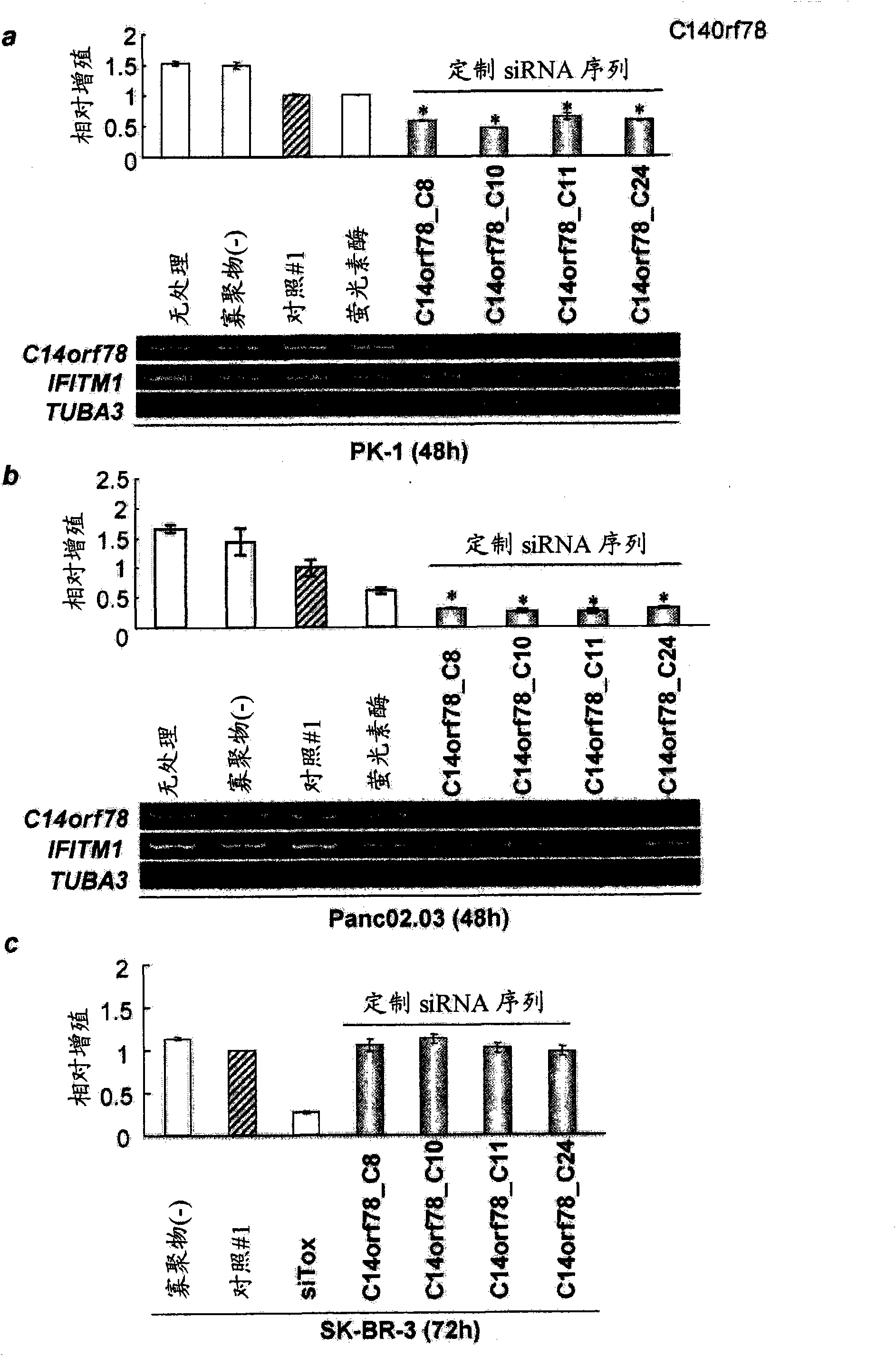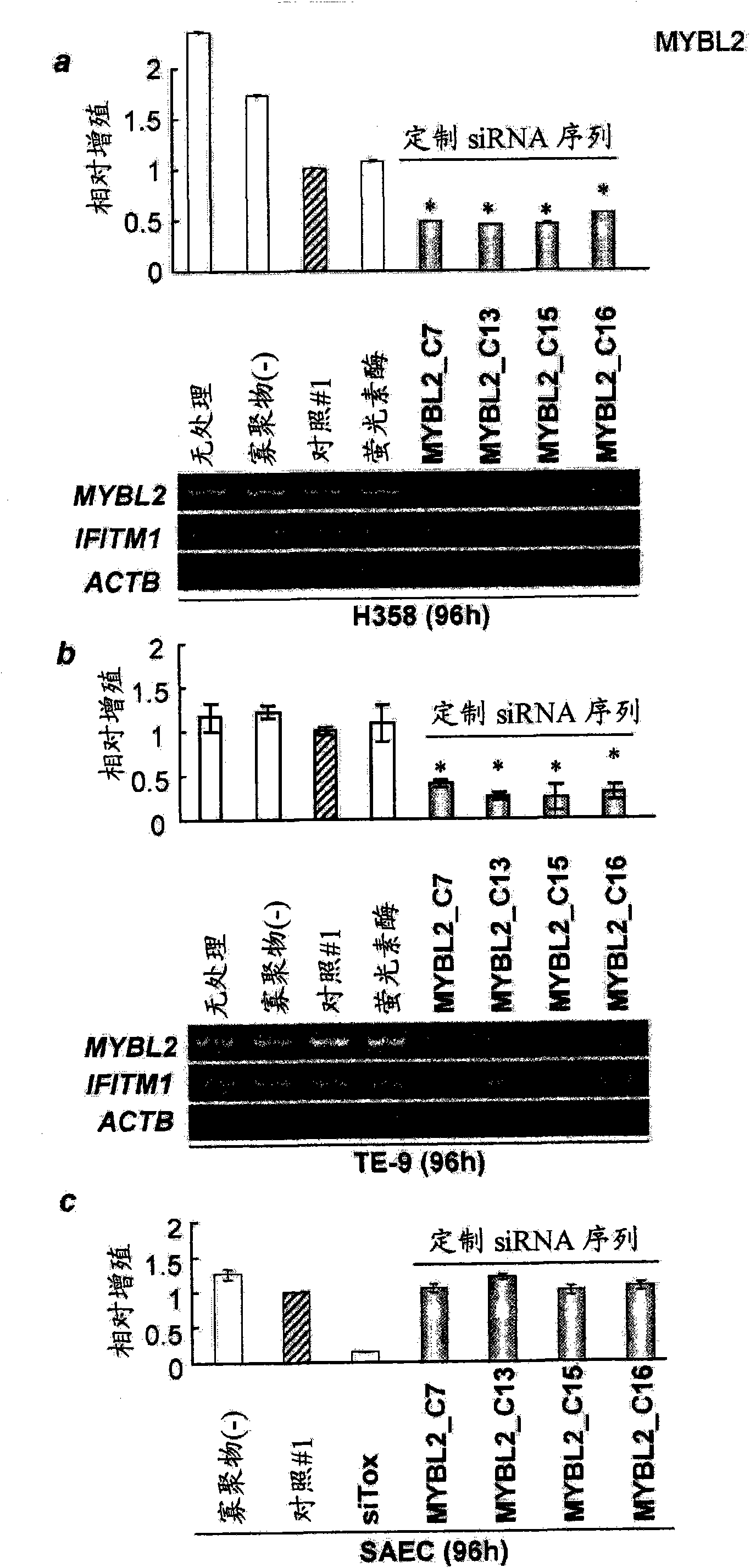Compositions and methods of treating cancer
A composition and molecular technology, applied in the fields of biological sciences and cancer research, can solve the problems of very early detection of precancerous states, etc.
- Summary
- Abstract
- Description
- Claims
- Application Information
AI Technical Summary
Problems solved by technology
Method used
Image
Examples
Embodiment 1
[0403] [Example 1] General method
[0404] tissue preparation
[0405] After preoperative informed consent of patients, 34 patients (bladder cancer), 25 patients (cholangiocarcinoma), 48 patients (colon cancer), 64 patients (esophageal cancer), 59 patients ( Prostate cancer), 15 patients (SCLC), 18 patients (pancreatic cancer), 37 patients (NSCLC), 81 patients (breast cancer), clinical bladder cancer, cholangiocarcinoma, colon cancer, esophageal cancer, Prostate, Small Cell Lung Cancer (SCLC), Pancreatic, Non-Small Cell Lung Cancer (NSCLC), and Breast Cancer samples.
[0406] cDNA microarray
[0407] Preparation of cDNA microarray slides has been described elsewhere (Zembutsu H et al., Cancer Res 2002 Jan 15, 62(2):518-2.; Nishidate T et al., Int J Oncol 2004 Oct, 25(4) : 797-819). To analyze the different cancer expression profiles, the inventors prepared duplicate sets of slides containing 23,040 (colon, soft tissue sarcomas, and testicular seminomas, prostate cancers) o...
Embodiment 2
[0443] [Example 2] Screening for upregulation in clinical cancer samples but no expression or low expression in normal organs genetic
[0444]cDNA microarray analysis was performed as previously described (Zembutsu H et al., Cancer Res 2002 Jan 15, 62(2): 518-27; Nishidate T et al., Int J Oncol 2004 Oct, 25(4): 797 -819). Genes that were generally upregulated in clinical cancer tissues were selected by comparison of expression patterns between cancer tissues and corresponding normal epithelium. Next, semi-quantitative RT-PCR analysis was performed to select cancer-specific genes that were detected to be highly expressed in cancer cell lines but not in corresponding normal organs and normal vital organs ( figure 1 ). Genes that are highly expressed in normal organs are excluded in case such genes may induce fatal side effects when such genes are used as target genes for inhibition in therapy.
Embodiment 3
[0445] [Example 3] Design of custom siRNA for candidate
[0446] Utilize the siRNA design provided on Ambion's website (http: / / www.ambion.com / techlib / misc / siRNA_finder.html) (Tuschl T et al., Genes Dev 1999 Dec 15, 13(24):3191-7) The tool designs siRNA sequences for each candidate gene to select candidate siRNA sequences. Each siRNA was introduced into cancer and control cells and their relative cell viability was assessed to obtain the most effective sequence for inhibiting cell growth (Table 1).
[0447] [Table 1]
[0448] siRNA sequences designed for 4 candidate genes
[0449]
PUM
| Property | Measurement | Unit |
|---|---|---|
| molecular weight | aaaaa | aaaaa |
| molecular weight | aaaaa | aaaaa |
Abstract
Description
Claims
Application Information
 Login to View More
Login to View More - R&D
- Intellectual Property
- Life Sciences
- Materials
- Tech Scout
- Unparalleled Data Quality
- Higher Quality Content
- 60% Fewer Hallucinations
Browse by: Latest US Patents, China's latest patents, Technical Efficacy Thesaurus, Application Domain, Technology Topic, Popular Technical Reports.
© 2025 PatSnap. All rights reserved.Legal|Privacy policy|Modern Slavery Act Transparency Statement|Sitemap|About US| Contact US: help@patsnap.com



